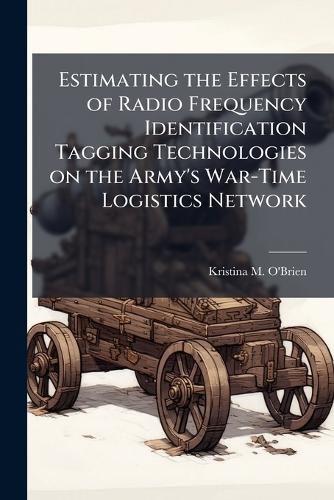Readings Newsletter
Become a Readings Member to make your shopping experience even easier.
Sign in or sign up for free!
You’re not far away from qualifying for FREE standard shipping within Australia
You’ve qualified for FREE standard shipping within Australia
The cart is loading…






Some civilian business practices, such as radio frequency identification (RFID) tags, were used for the first time by the Army in a major conflict during Operation Iraqi Freedom (OIF). RFID tags were attached to every container and pallet in all sustainment shipments entering and exiting the area of operations (AOR). Although RFID tagging was somewhat successful during OIF, the logistics network still suffered significant problems, to include lack of asset visibility and ineffective theater distribution. Implementing business practices on the battlefield seems like an easy answer to these problems, but the implementation of RFID tags may or may not easily transition to a military of combat environment. The purpose of this research was to discover if the business practice of using RFID tags to track equipment and supplies could be effectively used in a war-time environment by the Army's logistics network.
This work has been selected by scholars as being culturally important, and is part of the knowledge base of civilization as we know it. This work was reproduced from the original artifact, and remains as true to the original work as possible. Therefore, you will see the original copyright references, library stamps (as most of these works have been housed in our most important libraries around the world), and other notations in the work.
This work is in the public domain in the United States of America, and possibly other nations. Within the United States, you may freely copy and distribute this work, as no entity (individual or corporate) has a copyright on the body of the work.
As a reproduction of a historical artifact, this work may contain missing or blurred pages, poor pictures, errant marks, etc. Scholars believe, and we concur, that this work is important enough to be preserved, reproduced, and made generally available to the public. We appreciate your support of the preservation process, and thank you for being an important part of keeping this knowledge alive and relevant.
$9.00 standard shipping within Australia
FREE standard shipping within Australia for orders over $100.00
Express & International shipping calculated at checkout
Stock availability can be subject to change without notice. We recommend calling the shop or contacting our online team to check availability of low stock items. Please see our Shopping Online page for more details.
Some civilian business practices, such as radio frequency identification (RFID) tags, were used for the first time by the Army in a major conflict during Operation Iraqi Freedom (OIF). RFID tags were attached to every container and pallet in all sustainment shipments entering and exiting the area of operations (AOR). Although RFID tagging was somewhat successful during OIF, the logistics network still suffered significant problems, to include lack of asset visibility and ineffective theater distribution. Implementing business practices on the battlefield seems like an easy answer to these problems, but the implementation of RFID tags may or may not easily transition to a military of combat environment. The purpose of this research was to discover if the business practice of using RFID tags to track equipment and supplies could be effectively used in a war-time environment by the Army's logistics network.
This work has been selected by scholars as being culturally important, and is part of the knowledge base of civilization as we know it. This work was reproduced from the original artifact, and remains as true to the original work as possible. Therefore, you will see the original copyright references, library stamps (as most of these works have been housed in our most important libraries around the world), and other notations in the work.
This work is in the public domain in the United States of America, and possibly other nations. Within the United States, you may freely copy and distribute this work, as no entity (individual or corporate) has a copyright on the body of the work.
As a reproduction of a historical artifact, this work may contain missing or blurred pages, poor pictures, errant marks, etc. Scholars believe, and we concur, that this work is important enough to be preserved, reproduced, and made generally available to the public. We appreciate your support of the preservation process, and thank you for being an important part of keeping this knowledge alive and relevant.